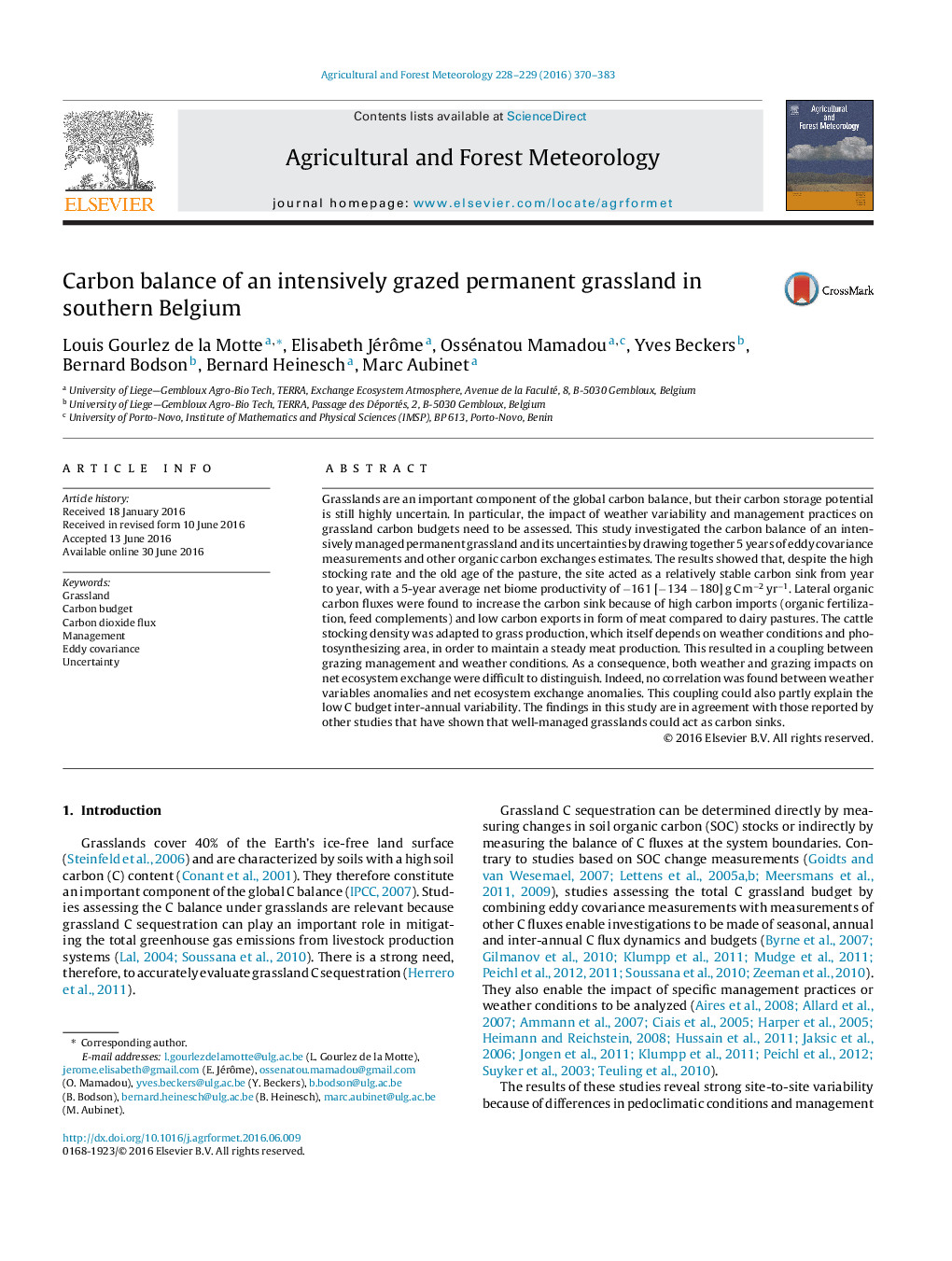| کد مقاله | کد نشریه | سال انتشار | مقاله انگلیسی | نسخه تمام متن |
|---|---|---|---|---|
| 6458247 | 158307 | 2016 | 14 صفحه PDF | دانلود رایگان |
- The carbon (C) balance of an intensively grazed grassland was investigated.
- On average the pasture acted as a relatively stable C sink.
- Both weather conditions and management practices were found to affect the C balance.
- Organic C imports in form of fertilization and feed supplements were higher than exports in form of meat.
Grasslands are an important component of the global carbon balance, but their carbon storage potential is still highly uncertain. In particular, the impact of weather variability and management practices on grassland carbon budgets need to be assessed. This study investigated the carbon balance of an intensively managed permanent grassland and its uncertainties by drawing together 5 years of eddy covariance measurements and other organic carbon exchanges estimates. The results showed that, despite the high stocking rate and the old age of the pasture, the site acted as a relatively stable carbon sink from year to year, with a 5-year average net biome productivity of â161 [â134 â180] g C mâ2 yrâ1. Lateral organic carbon fluxes were found to increase the carbon sink because of high carbon imports (organic fertilization, feed complements) and low carbon exports in form of meat compared to dairy pastures. The cattle stocking density was adapted to grass production, which itself depends on weather conditions and photosynthesizing area, in order to maintain a steady meat production. This resulted in a coupling between grazing management and weather conditions. As a consequence, both weather and grazing impacts on net ecosystem exchange were difficult to distinguish. Indeed, no correlation was found between weather variables anomalies and net ecosystem exchange anomalies. This coupling could also partly explain the low C budget inter-annual variability. The findings in this study are in agreement with those reported by other studies that have shown that well-managed grasslands could act as carbon sinks.
Journal: Agricultural and Forest Meteorology - Volumes 228â229, 15 November 2016, Pages 370-383
